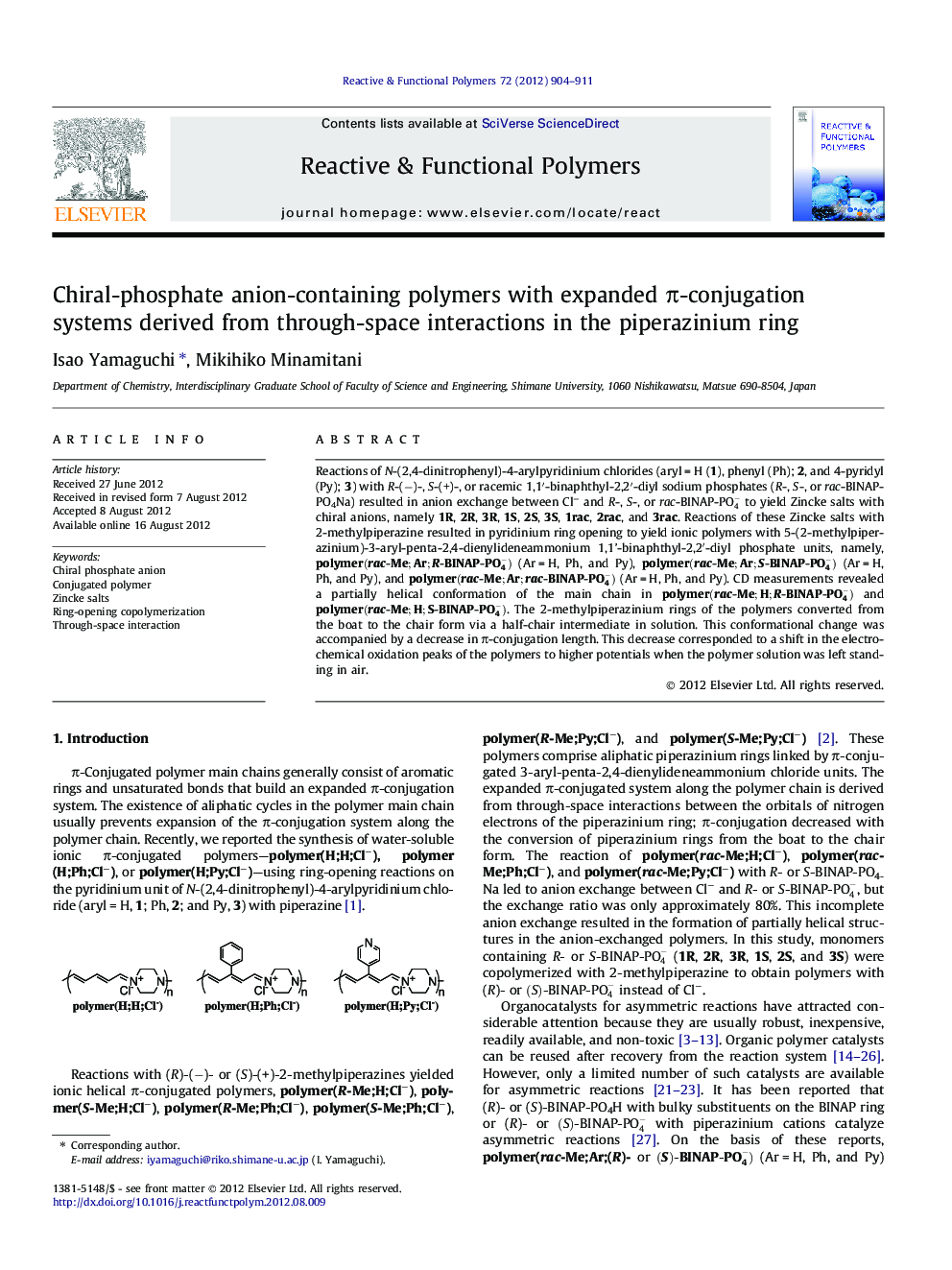| Article ID | Journal | Published Year | Pages | File Type |
|---|---|---|---|---|
| 5210210 | Reactive and Functional Polymers | 2012 | 8 Pages |
Abstract
Reactions of N-(2,4-dinitrophenyl)-4-arylpyridinium chlorides (aryl = H (1), phenyl (Ph); 2, and 4-pyridyl (Py); 3) with R-(â)-, S-(+)-, or racemic 1,1â²-binaphthyl-2,2â²-diyl sodium phosphates (R-, S-, or rac-BINAP-PO4Na) resulted in anion exchange between Clâ and R-, S-, or rac-BINAP-PO4- to yield Zincke salts with chiral anions, namely 1R, 2R, 3R, 1S, 2S, 3S, 1rac, 2rac, and 3rac. Reactions of these Zincke salts with 2-methylpiperazine resulted in pyridinium ring opening to yield ionic polymers with 5-(2-methylpiperazinium)-3-aryl-penta-2,4-dienylideneammonium 1,1'-binaphthyl-2,2â²-diyl phosphate units, namely, polymer(rac-Me;Ar;R-BINAP-PO4-) (Ar = H, Ph, and Py), polymer(rac-Me;Ar;S-BINAP-PO4-) (Ar = H, Ph, and Py), and polymer(rac-Me;Ar;rac-BINAP-PO4-) (Ar = H, Ph, and Py). CD measurements revealed a partially helical conformation of the main chain in polymer(rac-Me;H;R-BINAP-PO4-) and polymer(rac-Me;H;S-BINAP-PO4-). The 2-methylpiperazinium rings of the polymers converted from the boat to the chair form via a half-chair intermediate in solution. This conformational change was accompanied by a decrease in Ï-conjugation length. This decrease corresponded to a shift in the electrochemical oxidation peaks of the polymers to higher potentials when the polymer solution was left standing in air.
Related Topics
Physical Sciences and Engineering
Chemistry
Organic Chemistry
Authors
Isao Yamaguchi, Mikihiko Minamitani,
